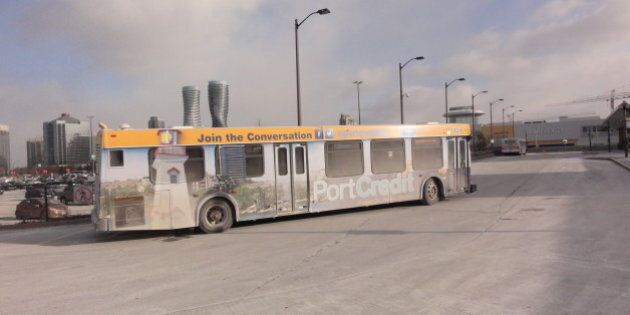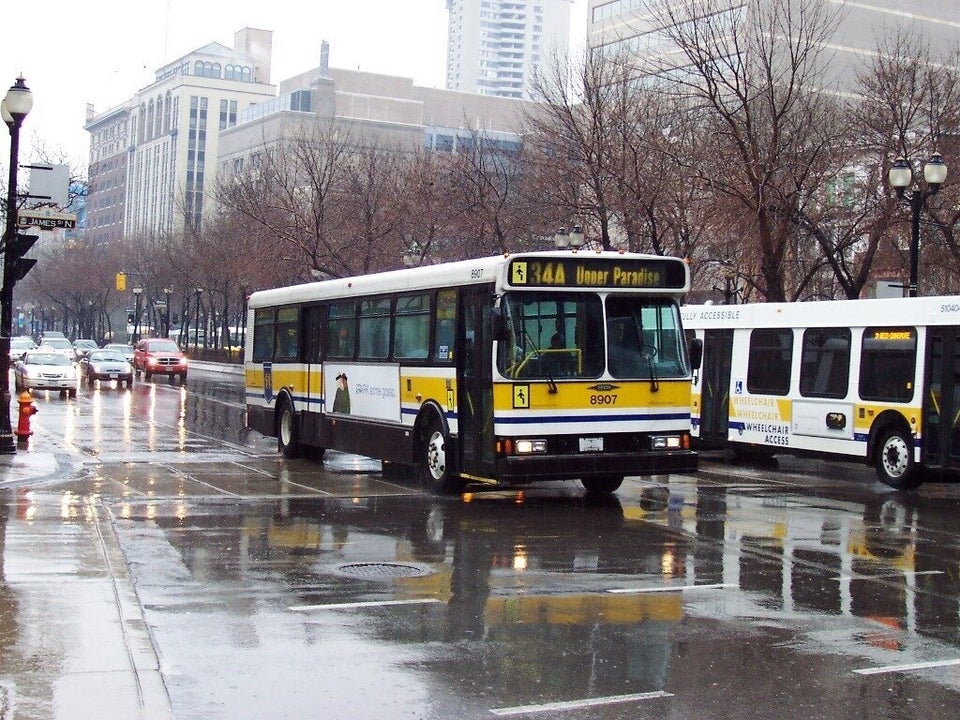
For local politicians in Mississauga and Brampton, money could very well grow on trees. The decision by the Province to pay 100 per cent of the $1.6 billion for the Hurontario Light Rail Transit (LRT) frees up the local governments from putting up one-third of the estimated costs. This year in the Region of Peel Christmas arrived in April.
Accompanied by the mayors of Brampton and Mississauga, Ontario's Transportation Minister, Steven Del Duca, overshadowed the Conservative government's planned public transit investments expected in the federal budget to be released today.
With the quest already underway to win over the suburban voters in Mississauga and Brampton in the federal elections this year, the Federal Conservatives will be hard-pressed to find another project to patronize in the Region of Peel. And while the Hurontario LRT is a project worthy of investment, it still does not explain how billions of dollars in transit spending are being prioritized in Ontario. Given the unmet transit demand in the City of Toronto, it is odd that the transit billions are being targeted at the suburban 905-ers, who are also deserving of sustainable transit.
The existing and expected transit ridership should dictate the priority for investments in public transit. In Montreal, the earlier subway lines (Green and Orange) were built along the most congested bus routes. Since being operational, the Green and Orange lines have enjoyed strong ridership. On the other hand, the Blue line, built later in the suburbs on mere speculation, struggles to attract sufficient transit ridership, even being operational for decades.
If ridership should be the primary consideration for prioritizing transit investments in Ontario, how does Hurontario LRT fare? Metrolinx estimates that by 2031, Hurontario LRT will carry 33-million passengers per year. These ridership forecasts should make the Hurontario LRT a priority.
However, the 33-million riders seem like a stretch to me. Why? Well, the busiest streetcar route in Canada is the King Streetcar that carries 65,000 passengers on a weekday. Assuming that the weekend ridership is around 30,000 passengers, the estimated ridership for King Streetcar is around 20-million passengers per year. Is it rational to hope that a suburban LRT will carry 50 per cent more passengers by 2031 than the ridership on King streetcar, which serves Canada's largest employment hub with over 400,000 service sector jobs?
If it is not going to be 33-million passengers, then how many riders should we expect on the proposed LRT route? Let's look at the bus routes currently serving the Hurontario corridor (19, 19A, 202, 2, 52), which carry 35,000 passengers per weekday. With an estimated induced weekday demand of additional 10,000 passengers (I am being generous here), we can estimate a weekday ridership of 45,000 passengers and a weekend ridership of about 25,000 passengers per day. Armed with these assumptions, we can get a rough estimate of about 13.75-million annual ridership on the proposed Hurontario LRT.
Even with significantly lower ridership estimates, i.e. 10-15 million annual riders instead of 33 million by 2031, I can see value in investing in Hurontario LRT. The existing bus ridership on 19 Hurontario is already five times higher than what Metrolinx expects for the Union-Pearson rail link that has until now costs the taxpayers hundreds of millions of dollars.
One can debate about whose ridership estimates are correct till the cows come home or riders actually board the trains. I'll be pleased to stand corrected. However, an even more important debate should focus on why the Ontario government decided to foot the entire estimated bill of $1.6 billion. There are consequences for this decision. First, in the absence of risk capital, a byproduct of not involving the private sector investments, it will be a challenge to complete the project on time and within budget. Don't trust me on this; instead read Megaprojects and Risk by Bent Flyvbjerg of Oxford University, who explains how projected transit ridership is systematically inflated and costs downplayed for large-scale, rail-based public transit investments.
Second, the lack of required investment by local governments in the project creates moral hazard. The benefits of Hurontario LRT accrue largely to the residents of the Region of Peel while the costs are shared by the taxpayers of Ontario. The same goes for investments in the 416 region. However, the multiplier effect, which delivers large benefits from investing in projects with realized demand instead of hypothetical one, justifies such investments.
The provincial government still would have to explain to other suburban jurisdictions why they have to come up with one-third of the investment when the Region of Peel got a free ride on the LRT.
The Feds may feel preempted by the Ontario Liberals' decision to pick up the tab for Hurontario LRT. It is arguably on the top of the voters' wish list in the Region of Peel. The Federal Conservatives have a lot at stake in Mississauga and Brampton and would like to hold on to the support in suburban ridings. With Ontario Liberals taking the LRT off the plate, the Federal Conservatives have to find another pet project to woo the suburban voters.
It is not merely important to invest in public transit, but also to prioritize transit spending while keeping in mind the tradeoffs that are inherent in every investment decision. All public spending is subject to budget constraints, which imply that funds spent at one place are not available to be spent elsewhere. Public sectors investments should respect the tradeoffs and immediate needs of the taxpayers while striving to maximize the welfare of the citizens.
ALSO ON HUFFPOST:
